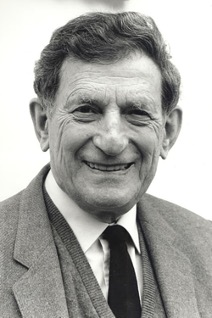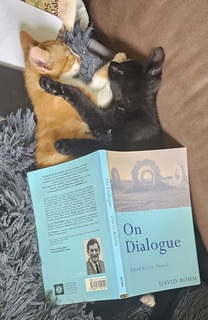Op 9 april hebben we vanuit het Dialoog Netwerk Nederland een online dialoog gevoerd. Met 17 deelnemers hebben we gesproken en geluisterd – mensen die er al vaker bij waren, maar ook een aantal mensen deden voor het eerst mee.
Onze onderzoeksvraag was ‘Wat vraagt het van een begeleider om een dialoog te begeleiden in een gepolariseerd veld?’ We hebben veel tijd besteed aan het delen van ervaringen.
Zonder dat we precies hebben gedefinieerd wat een gepolariseerd veld is, kwamen er duidelijke voorbeelden naar voren. Polarisatie wordt in verschillende contexten ervaren; dialogen in het sociale domein, in organisaties, in het onderwijs en ook in groepen die zich voor de waarde van de dialoog zelf hebben gevormd.
In die diversiteit heb ik een aantal gedeelde thema’s gehoord. Voor de hand liggend is de moeite die een begeleider ervaart in een gesprek waar de spanning voelbaar wordt. Ik vond het interessant om te horen dat ‘ruimte maken’ parallel kan lopen in de dialoog en in de begeleider zelf. Mensen vertelden over ‘hard werken’ in een dialoog om te zorgen dat iedereen aan boord blijft. Maar ook over de signalen die ze in zich zelf voelden, die aangeven dat ze zelf meegenomen dreigden te worden in de vernauwing die vaak gepaard lijkt te gaan met polarisatie. Innerlijk ruimte maken kan in eerste instantie door in ieder geval bewust te worden dat je het zelf ‘lastig’ krijgt. Dit vraagt om de moed om het eigen ongemak te durven ervaren. Bewust ademhalen brengt aandacht naar de innerlijke ruimte. Als begeleider verschuiven van ‘proberen de boel te redden’ naar getuige zijn van wat er gebeurt kan de helderheid en de ervaren ruimte stabiliseren. Maar het is ook eng, omdat het gevoel van controle en vertrouwen in een ‘goede’ afloop er niet per se groter van worden.
Bij een paar voorbeelden ging het ook over de structuur en randvoorwaarden van de dialoog. Zo hadden mensen dialogen begeleid, waarbij je je kon afvragen of de deelnemers vrij hadden gekozen om mee te doen en zich vrijwillig aan de ‘regels’ wilden houden. Of waren mensen de facto wel begeleider, maar was het mandaat voor die rol niet altijd solide. Dit soort situaties kunnen voorkomen, maar het wordt als begeleider dan moeilijk om terug te grijpen op het commitment van de deelnemers om zich ‘dialogisch’ te gedragen.
Ik werd erg nieuwsgierig toen ‘agressie’ werd ingebracht. De observatie was dat het soms lijkt alsof de dialoog regels geen ruimte laten voor agressie. Of misschien beter; het komt voor dat deelnemers de mond wordt gesnoerd, omdat wat ze inbrengen agressief zou zijn. Wat op zichzelf als een vorm van geweld kan voelen. Een paar keer kwam werd ook het omgekeerde genoemd; dat deelnemers zich wél naar de letter van de regels lijken te gedragen, maar ondertussen het luisteren naar elkaar ondermijnen. In dit soort situaties zou je een meta gesprek willen starten – ‘wat gebeurt hier?’
Dit vraagt veel van de begeleider en van de deelnemers – zeker als de spanning hoog is en het vertrouwen in elkaar wat minder.
Voor mij was het een mooi inzicht dat de spanning vaak ontzenuwd werd door deelnemers uit te nodigen om de pijn die ze bij zich dragen in te brengen. Polarisatie komt nogal eens voort uit een hele reële en persoonlijke krenking, angst of verdriet. Dialoog ontleent veel van haar waarde aan het delen van persoonlijke ervaringen. Juist in een gepolariseerde setting kan het delen van persoonlijke pijn ruimte scheppen om elkaar opnieuw als mens te zien.
Dit jaar is ‘Tussenruimte’ het thema van het Dialoog Netwerk. Via de eerste online dialoog dit jaar en de gesprekken in de continuïteitsgroep meanderden we naar vragen rondom hoe het zit met die tussenruimte dialogen. Vandaar kwamen we bij het gepolariseerde veld; hoe werkt tussenruimte als het spannend wordt?
Wat mij betreft was de vraag voor deze avond raak; ’tussenruimte’ is niet van tevoren ingebracht, maar kwam opvallend vaak terug in ons gesprek. Vooral ook als iets actiefs; iets dat je kan maken en dat functioneert, iets doet.
Wieger de Leur
wiegerdeleur.nl
Het beeld is gemaakt door Carry Rosenblatt Limpens








